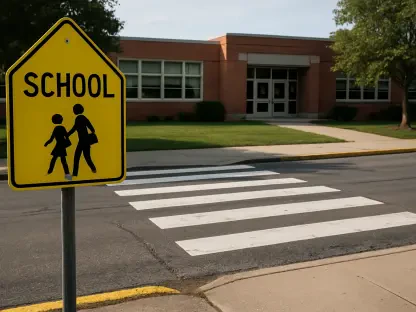The federal landscape of K-12 education funding is shifting due to policy changes under the Trump administration, compelling districts to confront financial challenges. With total funding historically relying on federal contributions, accounting for 13.6%, school districts across the nation are experiencing fiscal strain due to these reduced federal inflows. A recent report by Moody’s Ratings highlights that districts possessing strong budget management skills and the ability to raise revenues, coupled with robust access to state funding, are better positioned to withstand the financial headwinds. However, those heavily dependent on federal support, such as Arizona and Oklahoma, are confronting increased credit pressure. This development necessitates a discussion on whether state interventions can sufficiently bridge the fiscal gap left by dwindling federal aid.
Financial Challenges and State Responses
The unpredictability arising from withheld pandemic aid and delays in disbursing K-12 grants further exacerbates the financial instability faced by school districts. In the face of reduced federal contributions, some states have stepped up to increase their K-12 funding. Yet, Moody’s cautions about the uncertainties surrounding whether state initiatives will be able to fully compensate for the shortfall in federal support. Meanwhile, the introduction of a nationwide voucher program that expands school choice complicates the situation, potentially diverting enrollments away from traditional public schools. This shift poses risks to both funding and enrollment numbers, thereby impacting district budgets substantially.
Superintendents, grappling with the withholding of federal funds earmarked for existing contracts, are increasingly turning to local funding sources. In response, around 75% are forced to cut academic services, such as tutoring, while half anticipate labor reductions, especially in specialized education areas. This predicament underscores the urgency for districts to reevaluate their financial strategies. State action has been sporadic, with variation in the degree of support, highlighting the intricate balance between state capability and district needs. While state governments demonstrate some willingness to increase educational spending, the degree of commitment often varies based on political, economic, and social contexts.
Implications for Educational Competition
The expanding school choice initiative brings additional challenges as it can destabilize traditional public school enrollment, leading to budgetary constraints. Districts must now navigate this evolving educational landscape, which demands strategic planning and adaptive budgeting. Gregory Sobel from Moody’s observed that state funds might not be enough to counterbalance the reduced federal aid and the increasing competition from alternative educational institutions. The dynamics introduced by these policy changes call for school districts to adopt innovative budgeting tactics and secure alternative revenue sources to sustain academic programs.
The increased competition necessitates a meticulous approach to resource allocation, with districts analyzing pros and cons of potential cuts and investments. Staying competitive in this new age of school choice and reduced federal funding will require not just financial acumen but also an acute awareness of shifting educational trends. This scenario has prompted analysts to emphasize resilience and adaptability in financial planning as critical components for future stability in the K-12 sector. The implications stretch beyond immediate financial concerns, potentially affecting student outcomes and long-term educational strategies as districts continue to grapple with constrained resources.
Strategic Steps for the Future
The unpredictability caused by delays in pandemic aid and K-12 grant disbursements worsens financial challenges for school districts. Amid decreased federal funding, some states have increased their K-12 budgets. However, Moody’s highlights uncertainties regarding whether these state efforts can fully offset federal shortfalls. At the same time, a new nationwide voucher program that enhances school choice adds complexity, potentially drawing students away from traditional public schools. This shift endangers both enrollment and funding, significantly affecting district budgets. Superintendents, struggling with federal funds suspended for existing contracts, are increasingly seeking local funding. Consequently, about 75% of them are cutting academic services, like tutoring, while half foresee labor cuts, particularly in specialized education. This situation emphasizes the urgency for districts to reassess their financial approaches. State responses vary, balancing their support and the needs of districts, shaped by political, economic, and social factors, making their commitment levels unpredictable.









